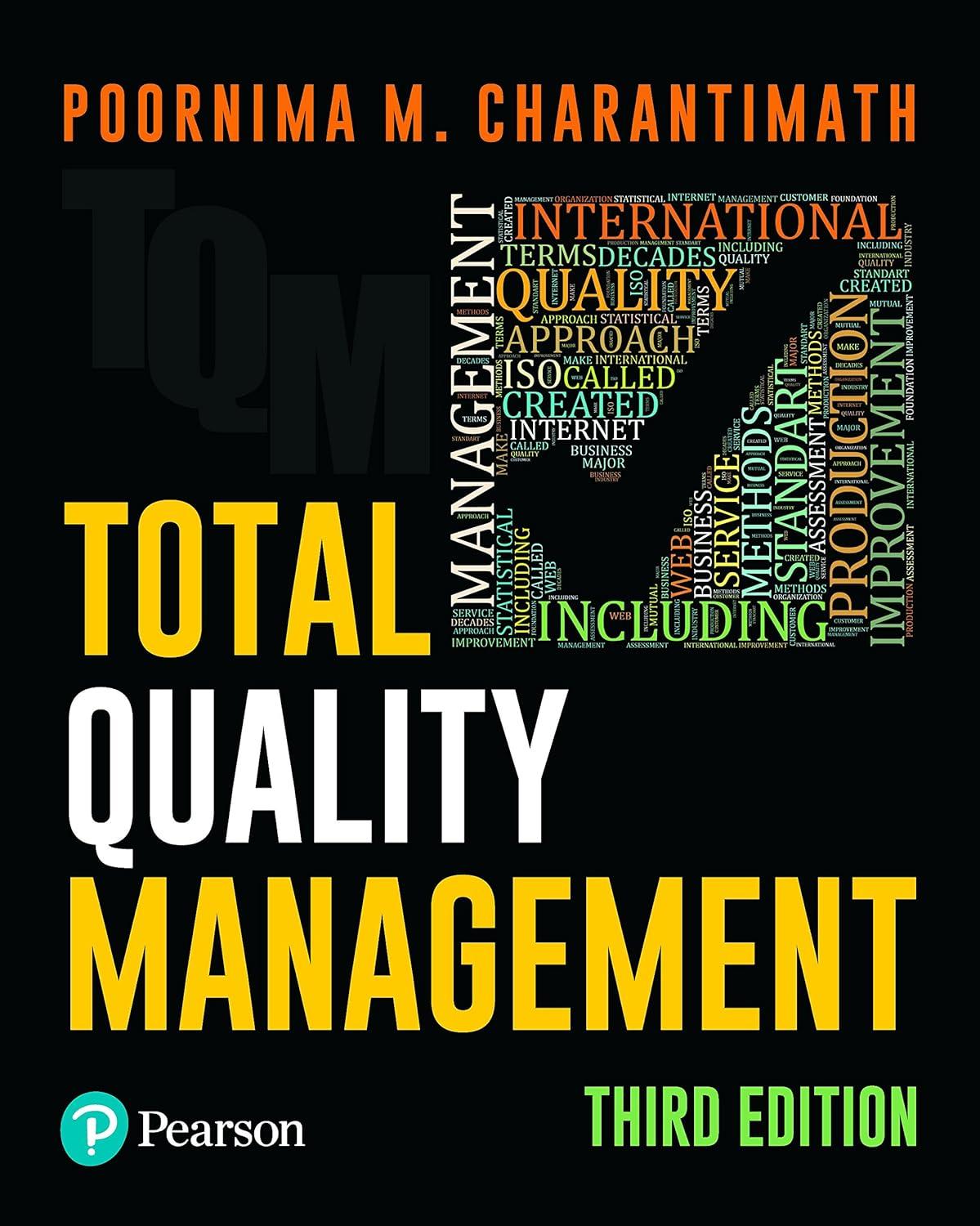A major national bank uses a five-day Kaizen approach to attack process speed and efficiency problems. A
Question:
A major national bank uses a five-day Kaizen approach to attack process speed and efficiency problems. A cross-functional team is selected for the event and participants are pulled off their jobs for several days at a time. The project is well-defined in the beginning because there is no time to redefine the purpose or scope.
A Typical Kaizen Schedule
A sample agenda that the bank uses for the five days of Kaizen implementation is given below:
Day 1 is spent training participants on topics that cover basic concepts related to the goals of the project. This could include teaching relevant lean or Six Sigma concepts and reviewing relevant data.
Day 2 is spent looking at the process with new eyes. Participants do a “unit walk,” a tour of operations affected by the problem or situation being studied where they simulate being a work item flowing through the process. The group visits each portion of the process because there is cross-functional representation, they have the opportunity to hear insights from someone who works in that area. The group creates a value stream map (a picture of the “as–is” situation) that captures the basic process steps such as cycle times, number of steps, rework loops, queuing delays, work in progress (WIP) and transportation time.
Day 3 is designed around clarifying problems and brainstorming solutions. The team reorganizes the value stream. It creates a “should” map that depicts how the process would need to function to solve the identified problems. The outcome includes developing action plans for implementing solutions or trial simulations for the next day.
Day 4 is used to test the solutions. A simulation exercise is carried out if possible. The group quantifies the improvement if the proposed changes are implemented using estimates of reductions in travel time, queuing time, work in process, number of steps, number of forms, etc.
On day 5, the participants prepare and present their findings to the sponsor in a formal report-out session.
Making it Work
The bank makes this model work by having its internal consultants partner with the manager/
sponsor to select problems that are extremely high priority, not only for that work area but also for the business as whole. This makes it much easier to justify taking people off their regular jobs. Also, the goal of the event is a little more modest than a traditional Kaizen. The teams are expected only to get through the simulation and piloting of solution ideas. The internal consultant will then assist the team with full-scale implementation.
The results achieved as a result of Kaizen implementation are:
1. Cycle-time improvements have ranged from 30 per cent faster to nearly 95 per cent faster.
One administrative process went from 20 minutes to 12 minutes, and a complaint resolution process dropped from 30 days to eight days.
2. Fiscal indicators have all been positive. One high-level project has allowed the bank to start charging for a service that previously was offered free to customers. New revenues are expected to total between USD 6 million to USD 9 million per year. Other projects have led to cost reductions or loss avoidance in terms of hundreds of thousands of dollars.
Conclusion
Kaizen events are a powerful improvement tool because people are isolated from their dayto-
day responsibilities and allowed to concentrate all their creativity and time on problem solving and improvement. Companies that use Kaizens have found that they generate energy among those who work in the area being improved and produce immediate gains in productivity and quality.
Question For Discussion
1. What are the characteristics of the bank’s Kaizen event?
2. Discuss the Kaizen model followed by the bank.
3. What are the results achieved by the bank by this Kaizen event?
4. Why do you consider the Kaizen event to be powerful?
Step by Step Answer:






